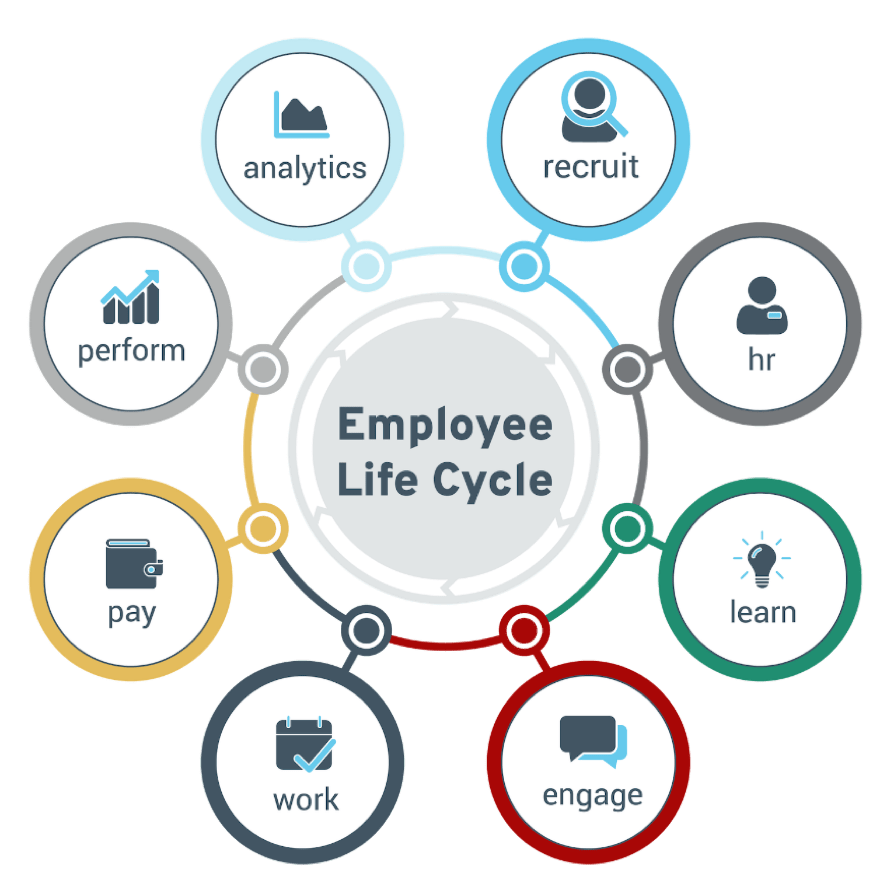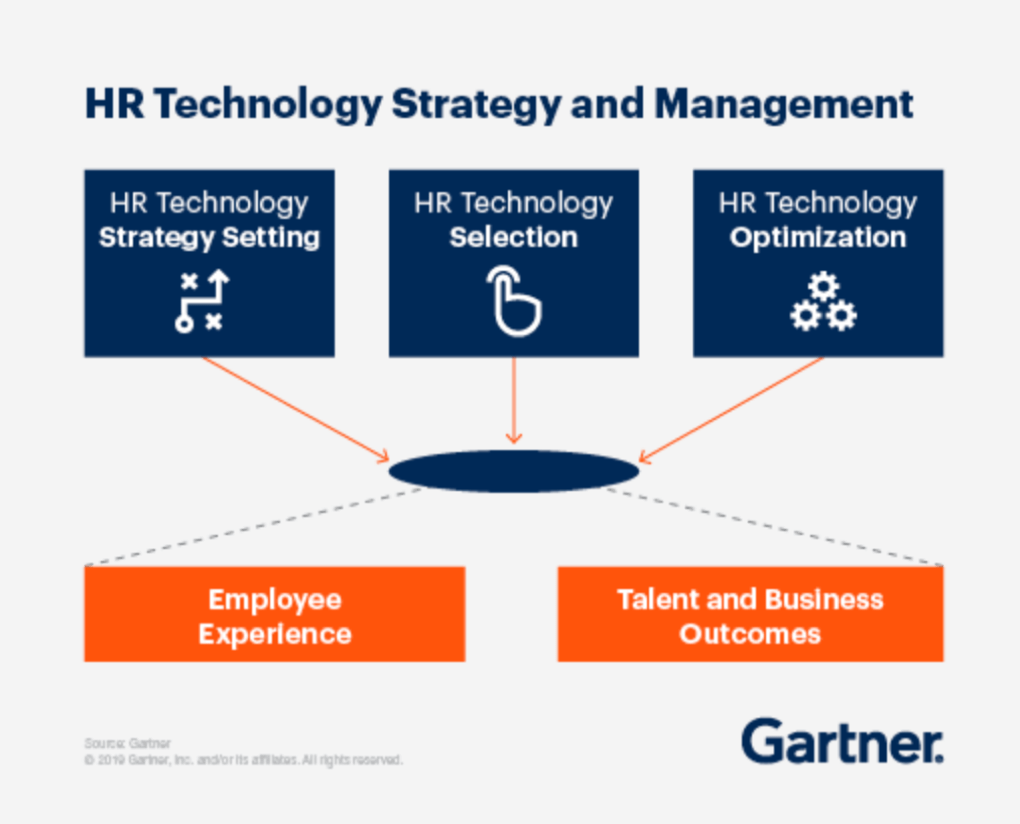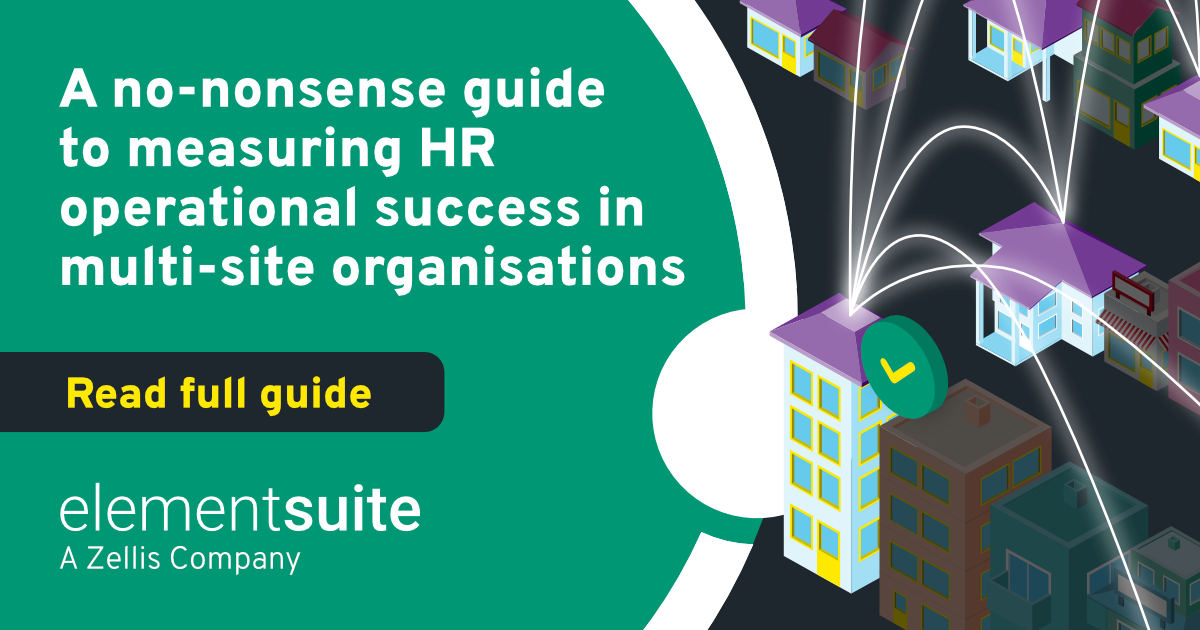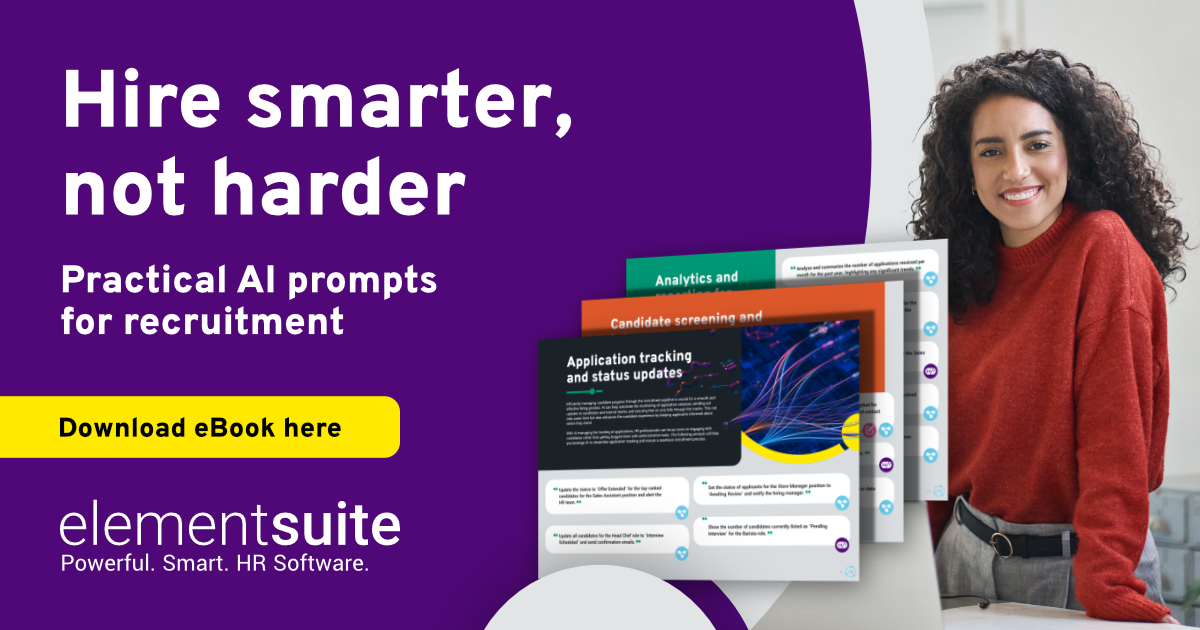HR professionals have faced considerable challenges over the past few years. The pandemic has really highlighted the shortcomings in existing systems and legacy processes for HR teams. According to Josh Bersin, almost 90% of companies need a refresh or new operating model for HR. His argument for this is that HR has become the centre of innovation. We agree, that HR needs to reorganise, to become more agile, become more data driven, with a higher degree of focus on employee experience than ever before.
At elementsuite, we are advocates for choosing the HR technology that’s right for your business. We know that businesses can often have as many as seven or eight systems they are trying to bring together to operate efficiently. But for many, its just not working efficiently. And its most definitely not agile and able to adapt to the changing business needs.
HR technology implementation projects can take years, they can be complex and risky. Not only can projects be expensive and time consuming, they can interrupt business, cause disruptions and the end results are not achieved. It does not, and should not be this way. Dynamic, innovative, modern HR technology can be implemented fast – weeks and months, not years. Adoption should be 100%, and you should see the benefits immediately you go-live. There should be complete transparency every step of the way. Most of all cloud-based SaaS solutions are cost effective.
Here’s our checklist for selecting the best HR software for you. All the essential steps you need to take to be successful in selecting what’s right for you.
Investing in new HR Technology
HR Technology changes so fast it’s difficult to make sense of it all. It used to be relatively simple to choose HR tech, as it used to be dominated by a relatively small number of mega-vendors. But with the emergence of mobile-first technologies and “best of breed” applications, the landscape has changed wildly over the past decade. Sometimes the complexity and choices are so overwhelming. It’s little surprise that sometimes the easiest choice is to do nothing, and maintain the status quo.
How can you decide upon selecting the right technology? How do you go about getting it implemented for your organisation? Major changes in flexible and remote working have been forced upon organisations. We’ve noticed a pent-up frustration in many organisations who realise they need to implement HR Tech, but don’t know where to start.

Buying a new HR system is a bit like buying a house. You start with a long list of ‘must-haves’, nice to haves, a budget and a location, but its hard to get it all in a single property, which means compromises and trade-offs. With the development of innovative cloud-based SaaS solutions, compromise is not something you need to consider. The great news is that getting it all, doesn’t have to come with a hefty price tag either.
Below are the nine key steps to follow to help you get it right. This aligns to Gartner’s HR Technology approach, ensuring employee experience and talent and business outcomes a central to your considerations.

Step 1. Desk Research
Work out where to start, when to make a change, how to save time. Identify your needs, before you move forward. Take your time to assess your internal needs, goals, existing structures and processes and what you want to achieve.
It’s important to start with your desk research to assess the HR technology landscape. You also need to determine the level of investment needed. Make sure you engage ambassadors from across the business, to be your advocates. They will provide valuable insight and input from all relevant areas of the business.
It’s important to select the right technology and vendors that are a good fit for your workforce, needs and organisation. Always have and eye on the future, make sure the solution is agile and can adjust to your changing business needs. Make sure you don’t get left behind when it comes to updates. Many solutions lock you in and don’t provide regular updates and access to the latest innovations. It’s a bit like the regular IOS updates from Apple.
Step 2. Justify the business case
The key sponsor for any HR transformation programme is typically the HR Director who is usually responsible for the creation of the HRIS business case. They typically receive support from other functional heads such as Recruitment, Benefits, Compensation, Learning, Payroll etc. Managers and employees may also be consulted for their thoughts and to provide supporting anecdotal evidence as to why change is needed.
Two other important stakeholders are the CIO and CFO. The former will ensure that the recommended solution complies with IT policies in critical areas such as security etc. The latter will often assist in constructing the financial justification for the programme and will certainly have a role in validating both anticipated costs and benefits.
In our experience, business cases can usually be organised into the following sections:
- Business Context: Summarising the reasons for considering a replacement of the HR system at this time, and how this supports the other strategies of the business
- Heatmapping/Benchmarking: The ability to baseline the current performance of the organisation against key cost and performance metrics and to compare against industry peers and best practice.
- Costs: The headline costs for replacement software, implementation, integration with other systems, and ongoing maintenance.
- Tangible Benefits: Covering the key areas of benefits, quantifying the impact that the new systems will deliver, the financial return that can be achieved and the timescales.
- Intangible Benefits: Highlighting the potential but sometimes hard to quantify benefits a new solution will deliver. These might often be critical to the business but difficult to put numbers against e.g. legislative compliance, business flexibility.
- Return on Investment: The comparison between the anticipated costs and likely benefits.
- Quick wins: It is important that the project delivers some key facilities/tools to the business quickly to show progress and gain support for future phases.
- The Journey: Taking a practical approach to delivering a foundation for growth and future initiatives, with a review of the service delivery options available.
- The Future: Looking ahead to the future possibilities which will become available once a fully integrated, capable HR system is implement
Step 3. Supplier beauty parade (RFI)
Now that you’ve undertaken some analysis of your needs, and started to construct your case for change internally via a formal business case, it’s time to start thinking about running an RFI (request for information).
The key to writing an RFI document is to make it really easy for the prospective vendors to understand. Like you, vendors are also busy, and it’s worth sparing them a thought, as this is something they’ll be doing “free of charge”. They do not expect to be paid for responding to an RFI, and have no guarantee of ever recovering this time investment.
As such, in order to get the best out of them it’s a good idea to keep the RFI as clear and concise as possible, and also align it as closely as possible to your needs. At this stage you don’t need to give away too much information, but an overview of your business, and some of the high-level drivers of your business case will help the vendors to understand whether their system is a good fit for your needs. Being as clear as possible about what you’re looking for, will save you and the vendor time.
Step 4. Organisational Structure
Before you move ahead with vendor selection its worth taking the time to make sure your internal environment is aligned and ready for the change ahead. All too often its easy to rush ahead with a technology change, when the business has not prepared the ground work. Often this flushes out gaps, lack of documentation and errors with reporting lines with reporting lines.
A good place to start is to look at your organisational structure. This is the foundation of any new HR system. You will need to be clear on your organisational/hierarchal structure, core job roles and people structure such as who sees what, workflows, reporting etc.
Step 5. Supplier shortlist (RFP)
through their paces. To see if they really do meet your requirements. To objectively compare vendors, companies ask HR vendors to complete an RFP (Request for Proposal). This document details more information in relation to the project and will be used to uncover the strengths and weaknesses of vendors.
This is an important document and will require an investment in time to compile, but will be instrumental in selecting the right solution for your organisation. This is your opportunity to move away from sales blah into the ‘nuts and bolts’ of what the system can do. Try to be specific, and provide as much detail as you can. This will give you the ability to compare ‘apples with apples’ when you get the responses.
Step 6. HR Data
Don’t underestimate the time it will take to check, and clean up your data. Data Protection is an increasingly hot topic, so make sure you’re in control. Give yourself plenty of time to review and cleanse your data
- It is important to understand all your current data sources. Ensure you are clear on the “master” source of this data currently.
- Use the opportunity to consolidate and remove any paper HR files
- start investigating and collecting early.
Step 7. Negotiation
Many buyers of HR software avoid negotiating their agreements. This is a missed opportunity. Negotiations don’t need to involve deception or deceit. In fact you should look for openness and honesty from your short-listed vendors. Many have fixed costs for implementation and cost per user/workforce size.
Consider what is most important to you:
- Do you want to minimize long-term costs? Then you’ll want to aim to get the lowest subscription fees possible
- Do you want to minimize Year One costs? Focus on the up-front costs, and implementation costs
- Do you want to manage cash flow? Then you’ll want to focus on the payment terms
Step 8. Navigating IT and procurement
If you’ve followed the earlier steps, navigating IT and procurement will be easy. By including them as key stakeholders early in the process you will be taking them with you on this journey (Step 2). However, procurement may be final blockers as its their role to ensure the best value is achieved. Making sure ROI for the company is delivered and overall the decision adds value to the business. HR software impacts the whole business, so its good to see procurement as one of your allies, rather than a blocker. Larger companies often have Category Managers in procurement who have a lot of insight.
IT is your friend, and you need them to ensure the project is successful. You may sometimes feel like you talk different languages (HR is from Mars, IT is from Venus), but their technical expertise will help you overcome implementation challenges.
Step 9. Initiating and mobilising your project
Successful project initiation and mobilisation is critical to the success of project delivery. However, not all organisations give this step of the project the attention it needs. Identifying the right internal team is essential, this can be an intimate process so building a team that will work well together. Ensure you have representative of all the key stakeholders including users. Don’t underestimate the need to include change management strategies as well as internal communications.
Pulling staff away from their every job will impact other parts of the business for the time of the project, which also needs to be considered and managed.
Conclusion
There is a lot to consider and take in, but paying attention to each step will really deliver the results you are looking for. The most important outcome is that you implement an HR system that’s the perfect fit for your business. Make sure it delivers your desired goals and outcomes. And is agile and adaptable to meet the changing needs of your business.





